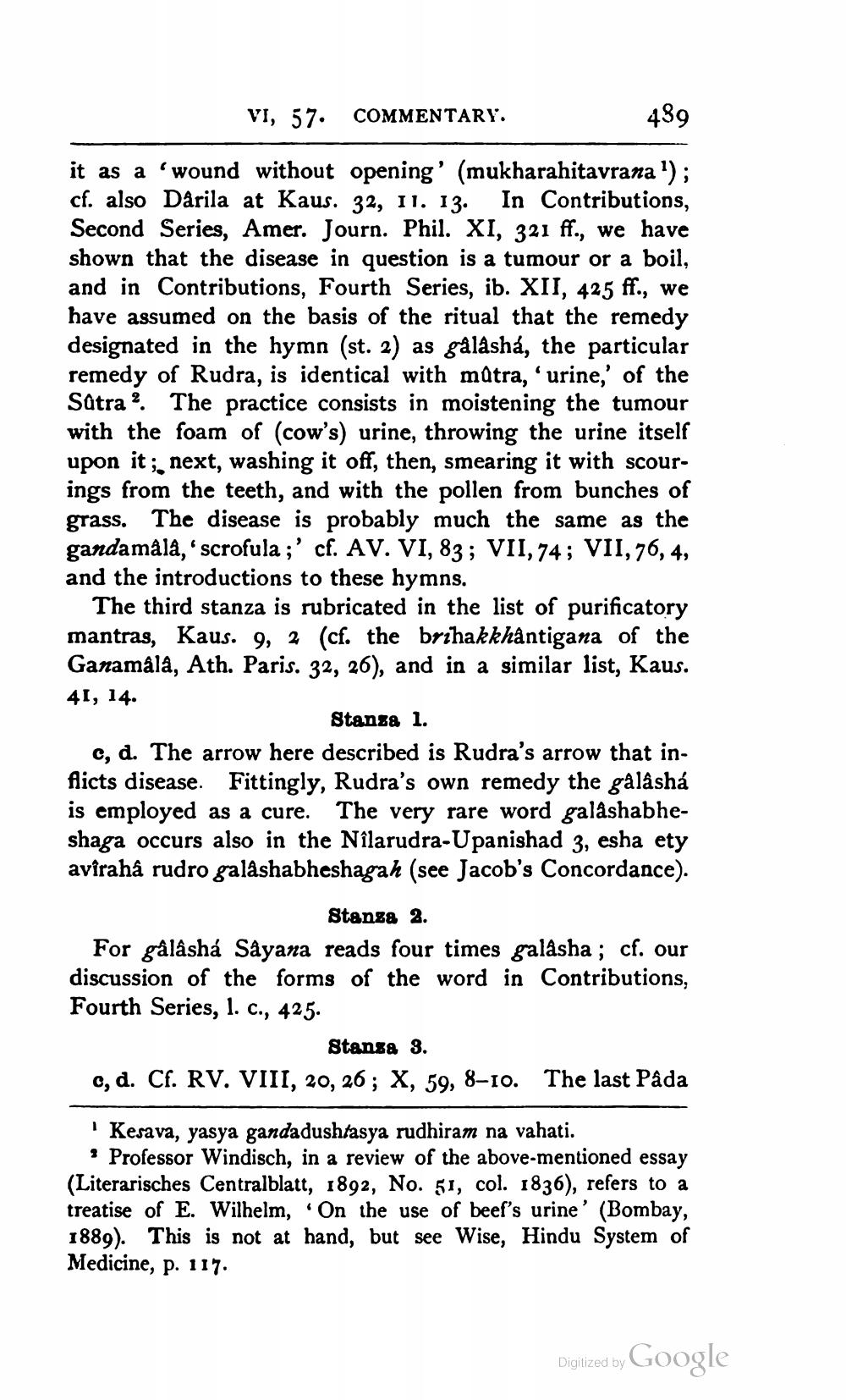________________
VI, 57. COMMENTARY.
489
it as a 'wound without opening' (mukharahitavrana'); cf. also Darila at Kaus. 32, 11. 13. In Contributions, Second Series, Amer. Journ. Phil. XI, 321 ff., we have shown that the disease in question is a tumour or a boil, and in Contributions, Fourth Series, ib. XII, 425 ff., we have assumed on the basis of the ritual that the remedy designated in the hymn (st. 2) as gálashá, the particular remedy of Rudra, is identical with mätra, 'urine,' of the Satra? The practice consists in moistening the tumour with the foam of (cow's) urine, throwing the urine itself upon it;, next, washing it off, then, smearing it with scourings from the teeth, and with the pollen from bunches of grass. The disease is probably much the same as the gandamála,'scrofula ;' cf. AV. VI, 83 ; VII, 74; VII, 76, 4, and the introductions to these hymns.
The third stanza is rubricated in the list of purificatory mantras, Kaus. 9, 2 (cf. the brihakkhàntigana of the Ganamâld, Ath. Paris. 32, 26), and in a similar list, Kaus. 41, 14.
Stanza 1. c, d. The arrow here described is Rudra's arrow that inflicts disease. Fittingly, Rudra's own remedy the gålåsha is employed as a cure. The very rare word galashabheshaga occurs also in the Nîlarudra-Upanishad 3, esha ety aviraha rudro galashabheshagah (see Jacob's Concordance).
Stanza 2. For galasha Sayana reads four times galasha ; cf. our discussion of the forms of the word in Contributions, Fourth Series, 1. c., 425.
Stansa 3. c, d. Cf. RV. VIII, 20, 26; X, 59, 8–10. The last Pada
Kesava, yasya gandadushtasya rudhiram na vahati. * Professor Windisch, in a review of the above-mentioned essay (Literarisches Centralblatt, 1892, No. 51, col. 1836), refers to a treatise of E. Wilhelm, On the use of beef's urine' (Bombay, 1889). This is not at hand, but see Wise, Hindu System of Medicine, p. 117.
Digized by Google




